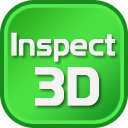Inspect3D Overview
Inspect3D. Analytics and Data Exploration for Biomechanics.
Inspect3D is the software tool for biomechanics researchers with large motion capture data sets.
Inspect3D allows users to: load multiple C3D files, detect and remove outliers, group signals based on custom conditions, analyse data, and produce visualizations every step of the way.
Inspect3D is designed to integrate seamlessly with Visual3D. Where Visual3D is primarily a session-based tool for processing motion capture data, Inspect3D lets researchers take their Visual3D results and process them at study-level.
At its heart, Inspect3D is all about helping researchers through the knowledge discovery process: collecting, cleaning, shaping, and analysing their data before communicating their results.
Collecting data: Inspect3D lets you load CMO files containing all of the C3D files associated with your study.
Cleaning data: Your data can be visualized easily as individual traces, workspace means, or group means. You can click on specific cycles and choose to exclude them from analysis. Early data visualization and formal outlier detection techniques help you ensure that only valid data is used for your analysis.
Shaping data: A single study can contain multiple questions, each looking at the underlying data in different ways. Inspect3D can automatically group signals for you or you can define your own custom queries based on tags, events, or expressions. Common signal groups include Left and Right signals, Affected and Unaffected sides, and Pitching vs. Non-pitching sides.
Performing analysis: Inspect3D implements common data analysis techniques such as summary statistics calculation, principal component analysis, and clustering algorithms.
Communicating results: Analysis results can be exported to a number of different text formats including Visual3D ASCII, P2D, and SPSS. Each of the different visualization tools also give you complete control over colours used, line styles, and axis labels to allow you to produce the figures that you want. Ready to see how you can used Inspect3D in your research? Get Started!

